Volkswagen e-Up facelift
Subcompact HatchbackProduct Gallery
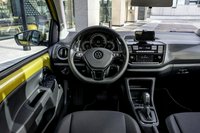
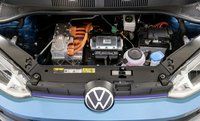
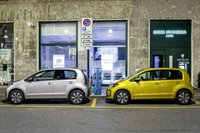
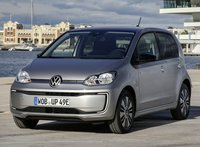
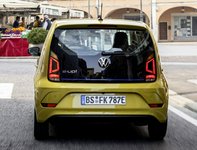
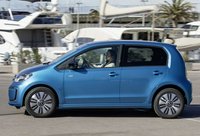
Product Overview
Volkswagen e-Up! facelift is an entry-level subcompact hatchback in production from 2019. It is powered by 83hp of electric power aided by a battery capacity of 37kWh.
Compared to the pre-facelift model, a markedly larger 36.8kWh battery is used, extending the EV range to over 250km. Still, this is barely sufficient for city duty, as is the case with the ICE Up!.
Compared to the ICE Up!, the same disadvantages can be found here.
Ratings
What we found
Neofiliac score 3%
Pros
- Small turning circle
Cons
- Horrible performance
- Miserably low engine output
- Barely acceptable electric range
- Poor suspension setup
- EV nonsense
What external reviewers found
External score 63%
Pros
- Good range
- Sleek design
- Comfortable to drive
Cons
- Not as spacious as rivals
- Not as practical as rivals
- Expensive for what’s inside
- No infotainment
Your rating:
12345678910
?/10
Price Comparison
As associates of the merchants above, we earn a commission when you make a purchase using the supplied links.
Specifications
[{"Ft":"Capacity","Fn":"Cargo Capacity","Fv":"250 L / 8.8 cu-ft ~ 923 L / 32.6 cu-ft"},{"Ft":"Capacity","Fn":"Passengers","Fv":"5"},{"Ft":"Capacity","Fn":"Payload","Fv":"370 kg / 816 lbs"},{"Ft":"Chassis","Fn":"Brakes | Front","Fv":"Ventilated discs"},{"Ft":"Chassis","Fn":"Brakes | Rear","Fv":"Drum"},{"Ft":"Chassis","Fn":"Power Steering","Fv":"Electric Steering"},{"Ft":"Chassis","Fn":"Suspension | Front","Fv":"MacPherson strut"},{"Ft":"Chassis","Fn":"Suspension | Rear","Fv":"Semi-independent, Torsion"},{"Ft":"Chassis","Fn":"Tire Size","Fv":"165/70 R14, 165/65 R15, 185/50 R16"},{"Ft":"Chassis","Fn":"Turning Circle","Fv":"9.8 m / 32.1 ft"},{"Ft":"Construction","Fn":"Battery | Capacity","Fv":"36.8 kWh (gross) | 32.3 kWh (net)"},{"Ft":"Construction","Fn":"Battery | Type","Fv":"Lithium-ion"},{"Ft":"Construction","Fn":"Battery | Voltage","Fv":"350.0 V"},{"Ft":"Construction","Fn":"Body Style","Fv":"5-door battery-electric Hatchback"},{"Ft":"Dimensions","Fn":"Ground Clearance","Fv":"135 mm / 5.3 in"},{"Ft":"Dimensions","Fn":"Size | Height","Fv":"1507 mm / 59.3 in"},{"Ft":"Dimensions","Fn":"Size | Length","Fv":"3600 mm / 141.7 in"},{"Ft":"Dimensions","Fn":"Size | Width","Fv":"1645 mm / 64.8 in | 1910 mm / 75.2 in (mirror unfolded)"},{"Ft":"Dimensions","Fn":"Track Width | Front","Fv":"1428.0 mm / 56.2 in"},{"Ft":"Dimensions","Fn":"Track Width | Rear","Fv":"1424.0 mm / 56.1 in"},{"Ft":"Dimensions","Fn":"Weight","Fv":"1160.0 kg / 2557.4 lbs"},{"Ft":"Dimensions","Fn":"Wheel Size","Fv":"5J x 14, 5J x 15, 6J x 16"},{"Ft":"Dimensions","Fn":"Wheelbase","Fv":"2417 mm / 95.2 in"},{"Ft":"Performance","Fn":"Acceleration | 0 - 100 km/h","Fv":"11.9 sec"},{"Ft":"Performance","Fn":"Acceleration | 0 - 60 mph","Fv":"11.3 sec"},{"Ft":"Performance","Fn":"Coefficient Of Drag","Fv":"0.31"},{"Ft":"Performance","Fn":"Electric Range","Fv":"256.0 km / 159.1 mi"},{"Ft":"Performance","Fn":"Top Speed","Fv":"130.0 km/h / 80.8 mph"},{"Ft":"Powertrain","Fn":"Drivetrain Layout","Fv":"Front-engine (transverse), Front-wheel drive"},{"Ft":"Powertrain","Fn":"Engine | Power","Fv":"83 hp / 61.9 kW @ 2750-11000 rpm"},{"Ft":"Powertrain","Fn":"Transmission | Gears","Fv":"1-speed"},{"Ft":"Powertrain","Fn":"Transmission | Type","Fv":"Automatic"},{"Ft":"Production","Fn":"Availability","Fv":"2019"}]
External Reviews
autocar[1]
Reviewer score 75% (normalized by Neofiliac)Volkswagen’s up city car has been with us since 2011, while the electrified version was its first mass-production EV to reach the market when it arrived in 2013. The e-Up is the next EV to benefit from the latest-gen technology. The big news is a new lithium-ion battery with 36.8kWh capacity, compared to just 18.7kWh for the old car. Volkswagen claims up to 161 miles (260km) on a full charge.
Pros
- Stylish design
- Powerful electric motor
Cons
- Expensive for what’s inside
autoexpress[2]
Reviewer score 65% (normalized by Neofiliac)The Volkswagen e-up! has been given an important task as it charges towards its ninth year on sale. It doesn't receive a new identity under the ID umbrella as it's not based on the group's MEB platform. Instead, this is a facelift that showcases just how fast battery technology is developing. It's still based on a modified combustion engine platform, but within the same space as the previous version of this electric city car. It now sits a more energy dense 36.8kWh battery - that's almost double the capacity, and it means maximum range leaps up to 162 miles.
Pros
- Extensive range
- Comfortable to drive
- Decent range
Cons
- No infotainment
Also Check
References
<
>
x